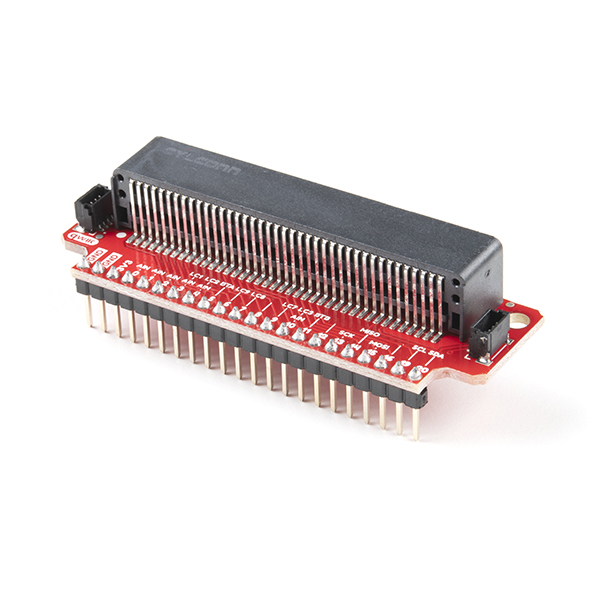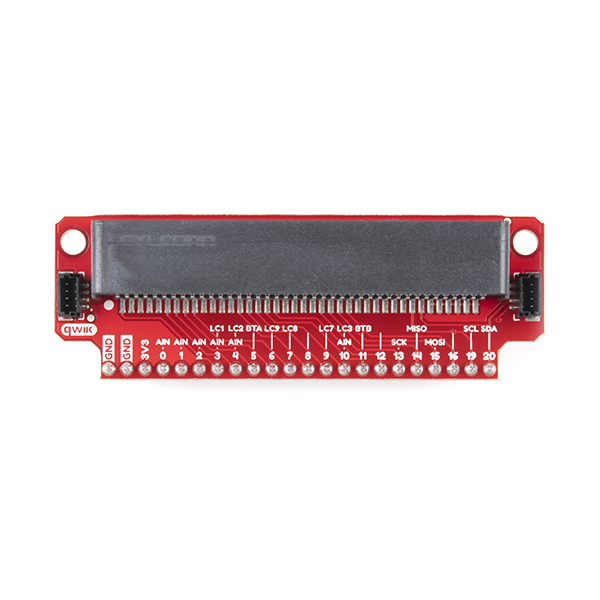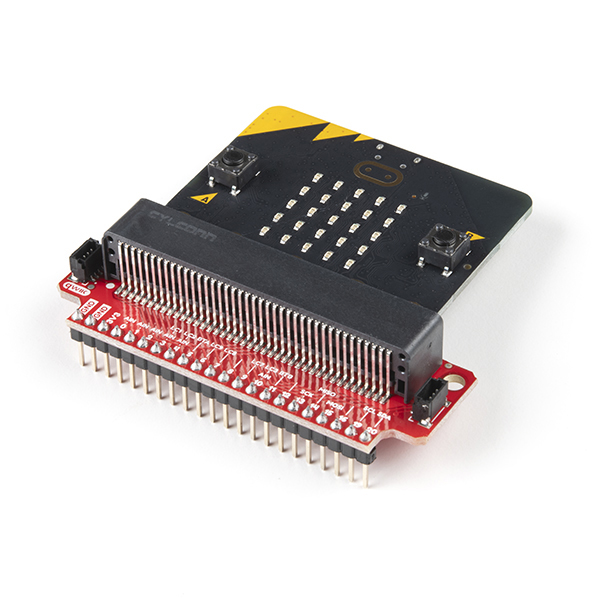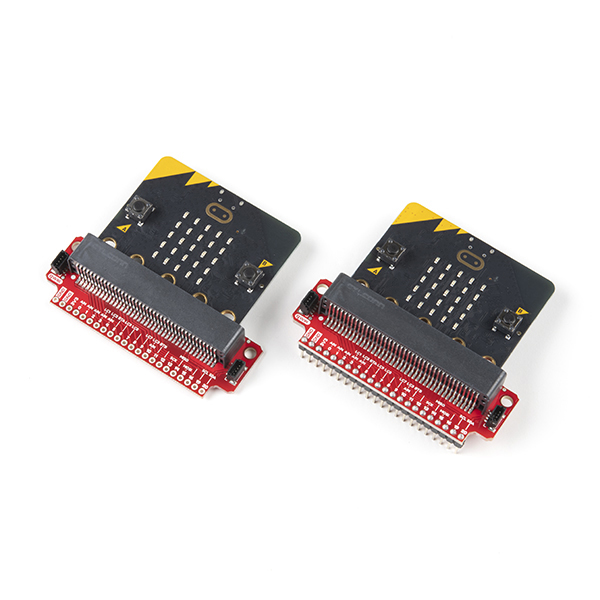SparkFun Qwiic micro:bit Breakout (with Headers)
The SparkFun Qwiic micro:bit Breakout is a board that connects to the BBC micro:bit and expands the capabilities of the development platform by providing access to more pins and allowing for connections to the I2C and SPI buses. We've already attached headers to this version of the board so you don't need to worry about any soldering! This breakout board for the micro:bit’s edge connector allows intermediate and advanced users to connect the micro:bit to breadboards and other Qwiic sensors, motors, LEDs and more!
The micro:bit on its own has three digital/analog input/output rings available for you to use initially with alligator clips. With the micro:bit breakout we have broken out all 21 GPIO pins to male headers, power and ground to a pre-soldered 0.1" header and with two individual Qwiic Connectors. With this breakout you will be able to unlock the full potential of your micro:bit!
Note: There is no micro:bit included with this breakout; it will need to be purchased separately. If you would like a micro:bit breakout without headers already soldered on, be sure to check out this board's sibling.
SparkFun Qwiic micro:bit Breakout (with Headers) Product Help and Resources
Wireless Remote Weather Station with micro:bit
May 11, 2020
Monitor the weather without being exposed to it through wireless communication between two micro:bits using the radio blocks! This is useful if your weather station is installed in a location that is difficult to retrieve data from the OpenLog. We will also explore a few different ways to send and receive data.
micro:bit Breakout Board Hookup Guide
June 17, 2021
How to get started with the micro:bit breakout board.
SparkFun Inventor's Kit for micro:bit Experiment Guide
July 21, 2017
This guide contains all the information you will need to explore the twelve circuits of the SparkFun Inventors Kit for micro:bit.
Getting Started with MicroPython and the SparkFun Inventor's Kit for micro:bit
July 11, 2017
Learn MicroPython with the micro:bit.
Core Skill: Electrical Prototyping
If it requires power, you need to know how much, what all the pins do, and how to hook it up. You may need to reference datasheets, schematics, and know the ins and outs of electronics.
Skill Level: Rookie - You may be required to know a bit more about the component, such as orientation, or how to hook it up, in addition to power requirements. You will need to understand polarized components.
See all skill levels
Comments
Looking for answers to technical questions?
We welcome your comments and suggestions below. However, if you are looking for solutions to technical questions please see our Technical Assistance page.
Customer Reviews
4 out of 5
Based on 2 ratings:
Item is exactly as pictured and described.
Item is exactly as pictured and described. This connector/breakout will give me much better access to signals than just the micro bit provides. Additionally I can plug other microbits into it.
Great idea for getting my students on a breadboard and not alligator clips.
Perfect.! I wish I had ordered more of these instead of 14 total dragon tails.








While it may look like this product has the pins mislabeled, I'm pretty sure it doesn't. For reference, this is how the pins are organized normally:
https://makecode.microbit.org/device/pins
Thank you for this device. It is like my recommendation I emailed earlier in the year. Curious, is a QWIIC Shim for the Micro:bit not physically possible? Similar to the Raspberry Pi QWIIC Shim I also thought a QWIIC Shim for Micro:Bit would be helpful for tight projects. Like a clip for the I2C pins - only covering those pins.